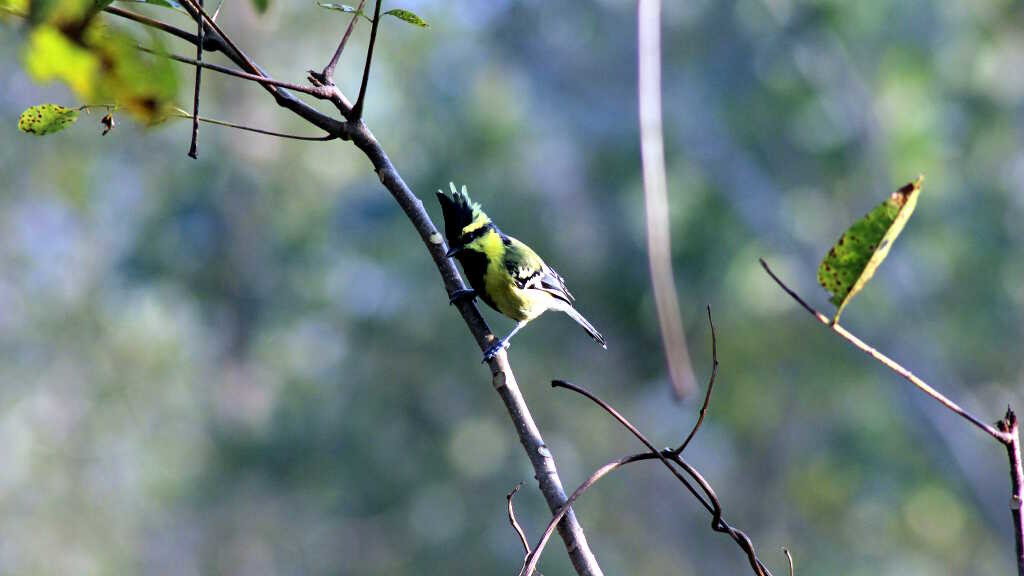
Parus xanthogenys ( Black-lored tit)
The Black-lored Tit (Parus xanthogenys) is a vibrant and active bird species commonly observed in the forested zones of the Great Himalayan National Park (GHNP). Its energetic behavior, striking plumage, and loud calls make it one of the most recognizable small birds in the region.
Appearance and Identification
The Black-lored Tit is a small songbird with a bold yellow underside and a black crest on its head. A distinct black stripe runs across its face—its “lore”—giving the bird its name. It also displays olive-green upperparts and white wing-bars, making it easy to identify when flitting among tree branches.
Common name Black-lored Tit Scientific name Parus xanthogenys Family Paridae (Tits) Description A black and yellow tit with prominent pointed black crest, and black band down centre of yellow underparts. Sexes alike in north Indian race; in the peninsular and south Indian races ventral band of female olive –green. Female of latter race moreover dimorphic, sometimes with black sometimes with olive green crown. : Similar to those of the Great Tit. Affects hill forests and wooded plateau country. Usually keeps in family parties hunting insects. Utters a lively chee-chee while in quest of food. During the breeding season the male has a loud, clear, whistling song: cheewit-cheewit. Resident and partial migrant throughout Hiamchal Pradesh Habitat and Range within GHNP
Within GHNP, the Black-lored Tit is typically found in broadleaf and mixed forests, especially those dominated by oak, rhododendron, and deodar trees. It usually inhabits elevations between 1,500 and 3,000 meters. This bird prefers mid- to upper-canopy levels and is often seen alone or in pairs, although it occasionally joins mixed-species foraging flocks.
Behavior and Diet
Highly agile and restless, this species actively hops through branches, foraging for insects, spiders, and caterpillars. It also consumes seeds and small berries. Its constant movement and sharp chirping make it a vital part of the forest’s acoustic and ecological landscape.
Ecological Role
The Black-lored Tit contributes to insect control and helps maintain a balanced ecosystem in GHNP. Its foraging behavior keeps pest populations in check, supporting forest health. It is also known to use tree cavities for nesting, thereby contributing to the biodiversity of microhabitats within the park.
Conservation and Observation
The Black-lored Tit is not considered threatened, but habitat degradation poses a risk in some areas of its range. GHNP’s protected status provides a crucial refuge for this species and others. Birdwatchers visiting the park can enjoy watching the tit’s acrobatic foraging and listen for its sharp, repeated calls echoing through the forest.
Conclusion
The Black-lored Tit (Parus xanthogenys) is a small yet significant resident of the Great Himalayan National Park. Its vivid coloration, energetic behavior, and ecological role make it an important species for bird lovers and conservationists alike. Spotting one of these agile birds is a rewarding experience that adds to the richness of GHNP’s birdlife.



